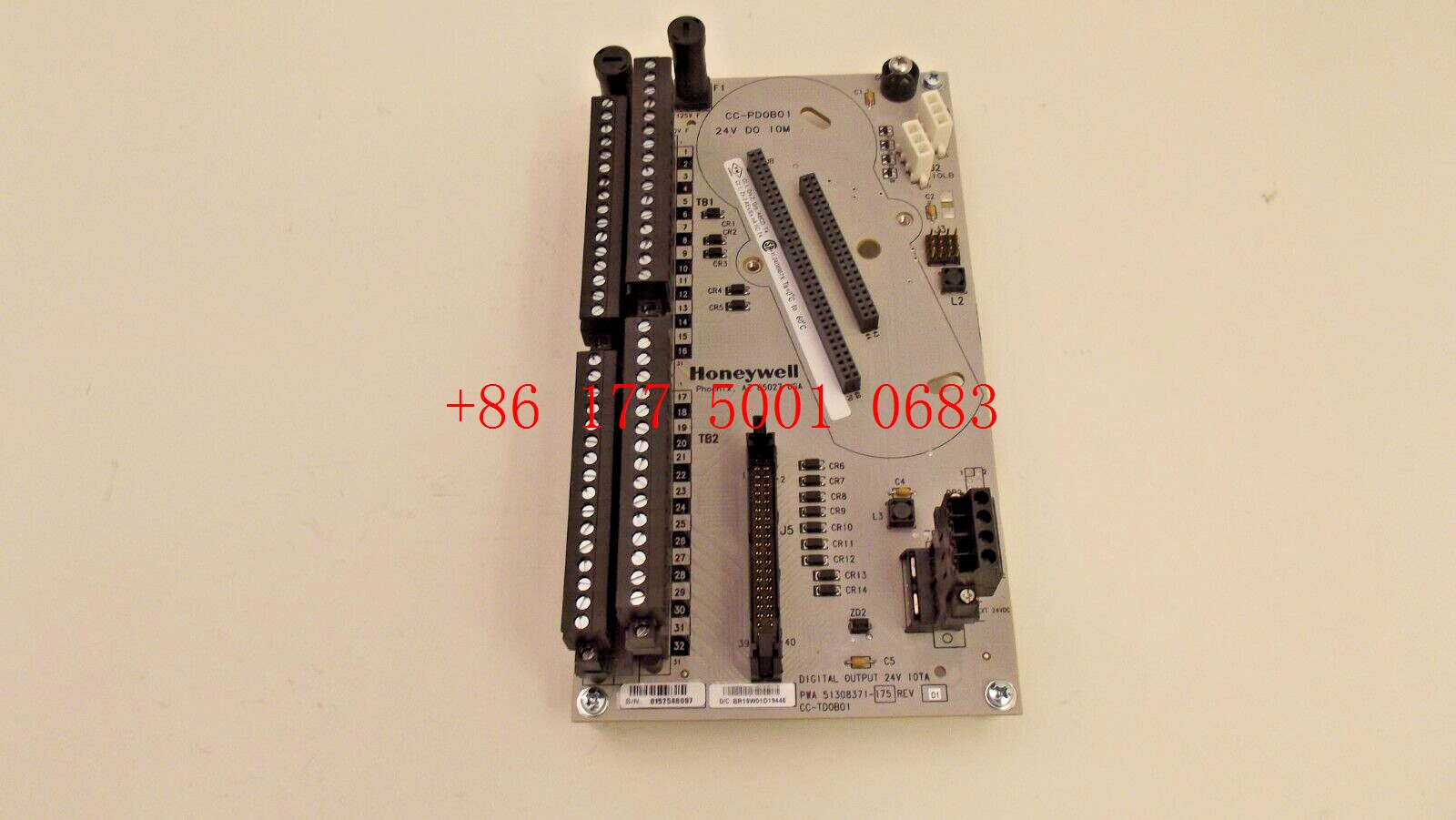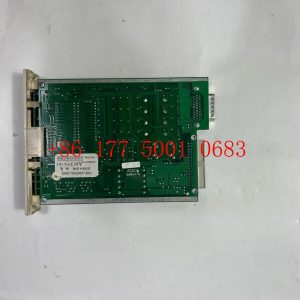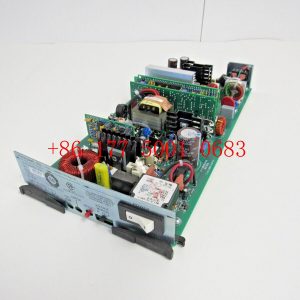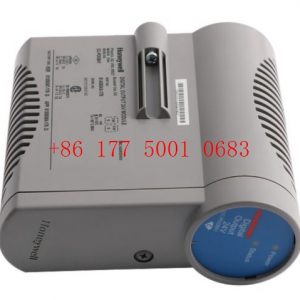Description
hardware flow control. It is an ideal choice in the field of industrial automation.
Design of ABB industrial robot deburring and grinding workstation based on RobotStudio simulation software
introduction
As an official offline programming software for ABB robots, Robotstudio not only has powerful simulation and offline programming functions, but also has automatic path generation
function and simulation monitoring collision function. It can realize the simulation of robots in real scenes, so as to timely update existing robot programs. optimize. On-site teaching
programming will affect normal production activities on site.
The application of Robotstudio software offline programming can reduce on-site teaching and programming time.
As a traditional process of mechanical processing, deburring and grinding have a wide range of applications. However, for a long time, in the process of manual deburring
and polishing, there have been differences in operations between workers. The manual operation is not repeatable and the deburring effect is unstable, which has seriously
affected the surface quality and service life of the finished product; and the working environment There is a large amount of dust floating in the air and the conditions are harsh,
seriously endangering the physical and mental health of workers. With the proposal of “Made in China 2025”, intelligent manufacturing production has become an
important development direction for the transformation and upgrading of the future manufacturing industry. The use of industrial robot automated production lines for repetitive
batch processing operations can not only greatly improve production efficiency, but also greatly improve product quality. Yield and production stability. Therefore, before designing
the robot polishing program, if the shape, size and polishing amount of the workpiece to be polished are known, the robot offline program can be written on the
Robotstudio software according to the existing conditions, thereby improving the efficiency of on-site programming.
1Design task description
This task is to create a new simulation workstation in ABB robot simulation software Robotstudio. The corresponding training equipment in reality is the Yalong
YL-l360A industrial robot deburring and grinding system control and application equipment. The industrial robot selection and method of the simulation workstation are
The grinding head installed on the blue plate refers to the Yalong YL-l360A industrial robot deburring and grinding system control and application equipment, and the
workpiece is customized. The ABB industrial robot deburring and
grinding workstation simulation training process includes: creating a workstation, setting up tools, creating smart components, creating tool coordinate systems,
creating trajectories, programming, simulation design, and verification.
2 Task implementation
2.1 Create a workstation
Import the robot: First, create a new simulation workstation in the Robotstudio software. The workstation name is self-named, and then import the
corresponding industrial robot IRB1410. The robot position remains unchanged by default. Create a robot system, modify the system options, check 709-1D
eviceNetMaster/s1ave, select Chinese as the language, and leave the other options unchanged by default, then click Confirm to create the robot system
After the robot system is created, hide the industrial robot IRB1410 to facilitate subsequent workstation operations.
Import workpiece: The workpiece here is customized, and the corresponding workpiece is selected according to the actual situation on site. This article
uses the original workpiece Curvet in Robotstudio software. After importing it into the workstation, according to the reachable range of the robot, just place the
workpiece at a suitable location within the reachable range of the robot, as shown in Figure 1.
Import the grinding rotor tool: First, create a new grinding rotor tool component – rotor – copy (2) and rotor – copy (2) in the so1idworks 3D software. The
rotor – copy (2) is a rotatable grinding rotor. —The copy is the tool body, which is the grinding rotor frame, and is installed on the robot flange, as shown in Figure 2.
2.2 Setting tools
First, move the rotatable grinding rotor and the tool body to the local origin based on point A, and adjust the initial tool angle so that the grinding rotor is
parallel to the x-axis of the geodetic coordinate system, as shown in Figure 3. Set the local origin of the tool body at this time, change the position x, y,: to 0, 0, 0, and change the direction x, y,: to 0, 0, 0.
Figure 3 Tool settings
Create a new frame at point B of the tool body, name it “frame l”, and adjust the direction of frame l so that the axis is perpendicular to the
plane of point B. The specific direction is shown in Figure 4.
https://www.xmamazon.com
https://www.xmamazon.com
https://www.plcdcs.com/
www.module-plc.com/
https://www.ymgk.com
1336-BDB-SP49D A-B Power connection board
Allen-Bradley 1336-BDB-SP44 PCB Gate Drive Board
1336-BDB-SP70C A-B grid driver board
140SAI94000S Schneider Digital input module
S20360-SRS KOLLMORGEN Control system module
S20660-SRS DANAHER DCS/ distributed control system
IC695CPU320-HS GE CPU module Controller module
MVI56-PDPMV1 PROSOFT Servo drive driver
FOXBORO P0912XX Control system I/O module
IS200DSFCG1AEB printed circuit board
IS200DSFCG1ADB Feedback drive
IS200DSFCG1A driver GE board
IS200DSFCG1ACA printed circuit board
IS200DSCBH1AAA terminal series andboard
IS200DSCBH1A TB series card
IS200DRTDH1ABA Mark VI series printed circuit boards
IS200DRLYH1AED MARK VI GE terminates
IS200DRTDH1A printed circuit board
IS200BICHH1A control board BICH
IS200BAIAH1BCB printed circuit board
IS200AVSCG1A SCR control board
IS200AVIFH1A Bridge interface board
IS200AVGBG1A MARK VI module
IS200ATBAG1AAA I/O board
IS200ATBAG1A I/O terminal board
IS200AEPCH1CCB turbine control module
IS200AEPCH1ABC General Electric board components
IS200AEPCH1A Central module
IS200AEPAH1AFD printed circuit board
IS200AEPAH1AAA turbine control PCB board
IS200AEPAH1A circuit board
IS200AEBMG1AFB analog input module
IS200AEBMG1A Input module
IS200AEBIH1ADC GE MARK VI board
IS200AEADH1A Input/output module
IS200AEAAH1C printed circuit board
IS200AEAAH1AAA Mark VI Printed circuit board
IS200AEAAH1A printed circuit board
IS200ADIIH1AAA ISBUS interface board








Reviews
There are no reviews yet.